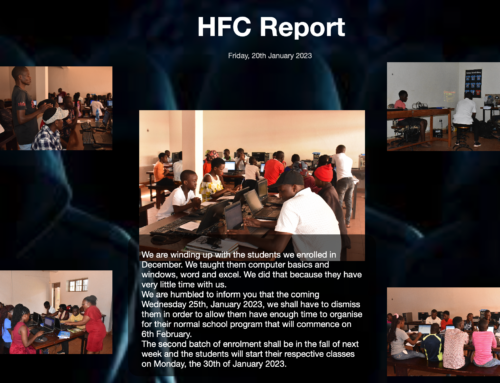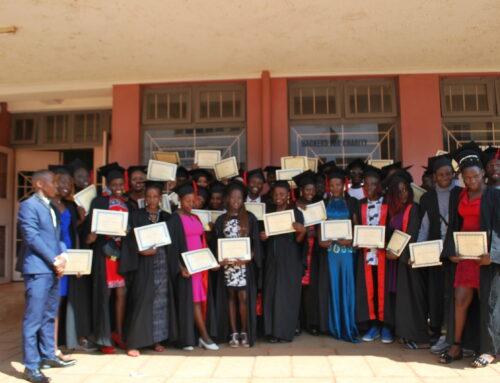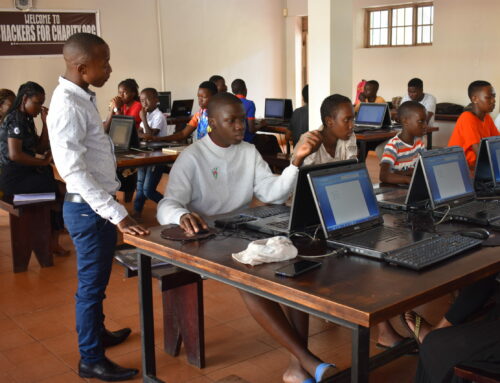When we first started looking for a place to rent in Uganda, we looked in Jinja town because we wanted to be close to people (lots of Mzungu families around) and the shopping market. But one after another, the rental properties were pulled out from under us. We had several places that seemed OK, each one averaging $600-$700 a month but none of them worked out. Part of the problem was that all the Mzungus want to live in Jinja–the missionaries, the tourists and even the business people–and all of them were more than happy to shell out $700/month which is a good price for even an unfurnished place in Jinja.
Then our friend Sam mentioned a place in Njeru, a quiet area overlooking the Nile about 5km away from Jinja. He mentioned that it was “a bit small” but that “it was furnished” and was renting for about $750/month. He also mentioned that it was brand new, had a guesthouse and a very solid compound. Here are some of the pictures he sent us.
The pictures sealed the deal. The place looked great, even if it was $100 more than we planned on spending a month.We paid six months rent in advance, thankful that we found a house. The kids were excited and we were pretty excited too.
But I haven’t acted very excited about the house. I haven’t blogged about it and I haven’t posted any pictures. The fact is, I was too embarrassed by the place to post any pictures.
It was built by a group of Ugandans as an investment property, and it caught the eye of the Vice President of Salini, the huge construction company that’s building one of the dams on the Nile. The dam is the largest project for thousands of kilometers in every direction and this guy was a big dog in the company. He liked the place, and started furnishing it to his tastes for his family. Untold thousands of dollars later, he decided the work on the guesthouse was taking too long, so he bailed out of the property and stuck the Ugandans with the bill for the furniture.
It sat unrented for a year, because (in my opinion) it was way too overdone for local tastes. But because the rent was reasonable enough and it was in a nice laid back neighborhood, we jumped in and paid the requested six months in advance.
For a while, this place really bugged me to the point that I shopped around for another place. I thought about Bugembe, which is considered a slum by many Ugandans I talk to, but it’s where Sam and Nancy (family friends and founders of AOET) live and where we stayed during all of our short-term trips. Bugembe is where the magic happened.
That’s where we caught the bug to move here. It’s the place where throngs of children will swarm to greet you and it’s all but impossible to take even a short walk without five children escorting you, happy as a clam to be seen holding your hand.
But Bugembe is oppressive. The need is too close and the weight of the place can really only be taken in short doses. For us, it’s a place we frequent, but it’s not a place where it’s possible to decompress, it’s far too dangerous for our children, it’s impossible to control the mice and cockroaches and mosquitoes, and it’s certainly no place to stage thousands of dollars of computer gear. (Bugembe is where “dark road” happened). Besides, rent there isn’t cheap either. We heard of one place renting for $650 unfurnished, but it was tiny and vanished from the market almost instantly.
All this to say that we’ve signed a one-year contract on this place in Njeru. It’s become a home to us, and we like the tranquility, the cool breeze coming off the Nile, the comfortable compound and the guesthouse that’s given us the opportunity to help out guys like Dennis and Fred. I like that we have plenty of room to safely work on rather large projects (like Rehaboth Primary, Rehaboth Integrated High School, St. John’s) and thanks to Team Whitewolf, I realized the value of being able to work without worrying about gear getting stolen or fried by bad power or eaten by cockroaches.
So we’re stuck here, locked into this amazing place. It’s the kind of place that will help us when things get really tough here, and it really helps us decompress and recharge our batteries. It helps us be a family, and provides just the right kind of distance from the crushing need we’re trying to help alleviate.
It’s taken me three days to write this post. Not because it’s long winded (it is) but because every time I get into this post it sounds like too much justification from a guy that’s living off of support money from donors (subtle plug). It sounds like I’m trying to explain why we live so lavishly, but I’m over it. There are in fact lots of places much more lavish than this one, even in Jinja, and way too many places better than this in Kampala. I’m glad we aren’t paying $100 less a month to live in the slums because if we were, we’d already be gone.
So now I just laugh at the place. I laugh at our ridiculous living room:
I laugh at the GrandFather clock and the silly rich-looking (but veneer) black, gray and glass cabinets and tables. I laugh at the flat-screen TV, which is much nicer than the 27″ tube I have back home, except for the fact that it doesn’t work (bad power blew it out and the landlord can’t afford to fix it). Like the veneer furniture thoughout the house, this whole place is filled with things that look nice in pictures, but when you get really close you realize that it’s all fake. Still, Mr. Vice President spent a fortune on it all, because it looks rich, and I guess that’s what rich people need to do.
The green (!) leather chairs and couches are real though.
VP spent $4000US on the set. But like most of the furniture in the house, we’re looking to replace it with local stuff, like a $300 “wicker” sofa and chair set which isn’t really wicker at all, but sticks. Why? For lots of reasons. The first of which is that the stuff is too pretentious and it’s rich for the sake of being rich. The reason we’re looking to replace the couches and chairs specifically is that they’re just dumb. This is Africa. Africa is HOT. Leather and hot don’t mix. Ten minutes in one of these chairs on a hot day is enough to steam your butt right off.
The dining room table is nice and seats twelve. Yes, we could host the last supper here.
But even if we did host the last supper here, the landlord still wouldn’t let us take the plastic off the seats. Yes, the seats are fabric wrapped in heavy plastic. Makes sense, because you want to protect your investment. BUT THIS IS AFRICA. AFRICA IS HOT. Ten minutes in these puppies will permanently sear your underpants to your butt. And yes, that’s the second time I mentioned buttockses in this post.
The last picture I’ll post today is of this fancy hutch, which came filled with no less than fifty alcohol glasses. We’ve got whisky, wine, beer champagne, brandy and glasses that I’m not even sure what kind of alcohol they’re for.
We don’t drink, but the internal lights light up when you open the door. When we had our friend OJ over with his family for a movie night he said it looked like they had captured the stars in the sky and put them in a box. Then he asked if they were “real” glass. That really puts it in perspective. To a Ugandan that’s lived in the village his whole life, this stuff is breathtaking. He had never seen that much shining glass in his life. He had never seen a jellyfish either which is why despite the fact that we’re still embarrassed by this place, we’re going to use it to the best of our ability to make a difference. That sentence makes no sense, but I’m tired of this post already. (We invited him and his family over to watch IMAX “Deep Sea” on DVD, thrown on a wall from a projector we brought for the classrooms, which now we don’t need thanks the NetSchool Support software). They were “thrilled” and “refreshed” and “blessed” by the evening out, saying it was the highlight of their entire year. And that makes up for a lot of the ridiculousness of this house.
And that’s the thing. Even though we’ve been given a real gift in this house, it’s not about the house. It’s not about the stuff. It’s about what we can do with the house and the stuff to make a difference.











